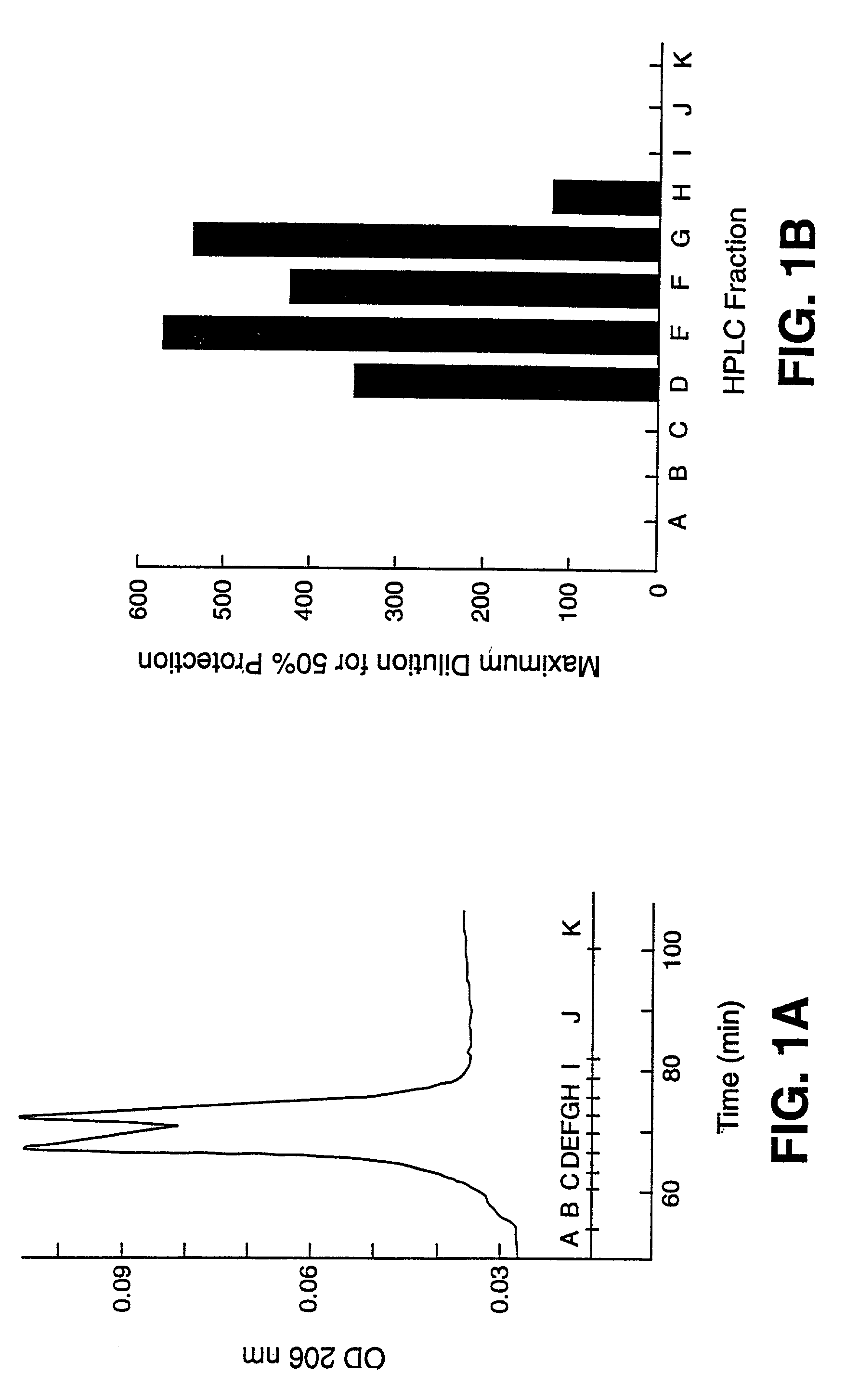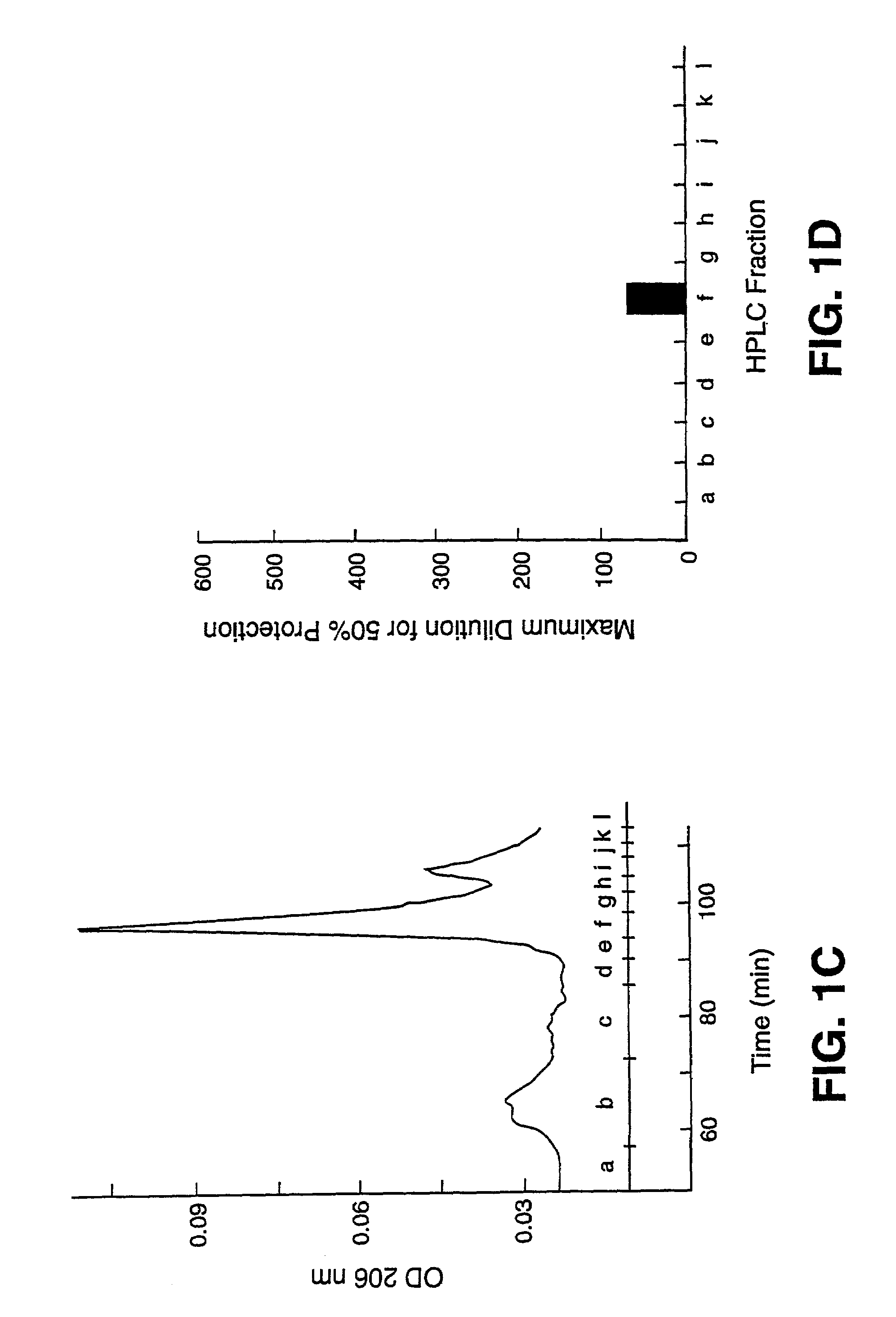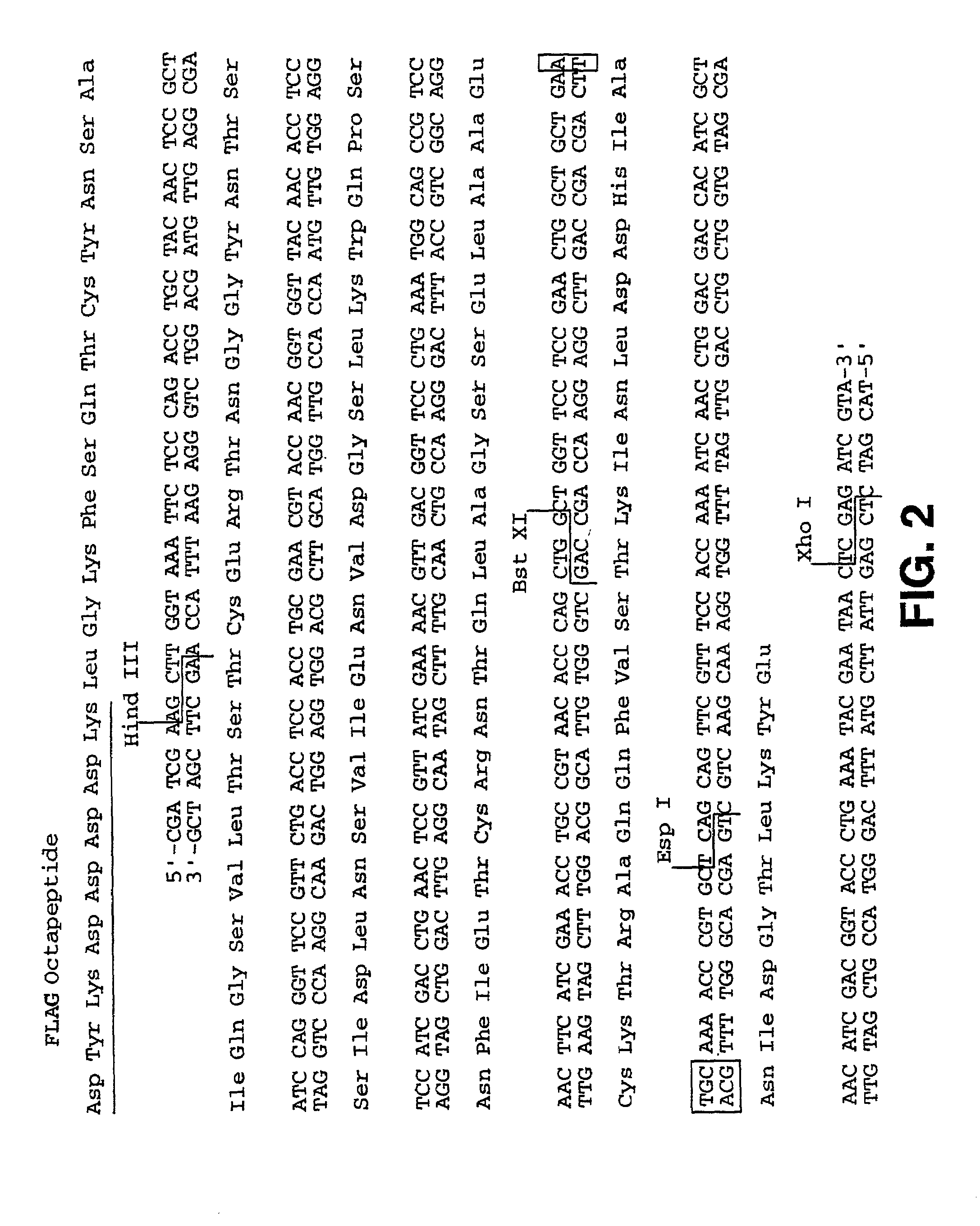Cyanovirin conjugates and matrix-anchored cyanovirin and related compositions and methods of use
a technology of cyanovirin and conjugate, which is applied in the field of cyanovirin conjugates and conjugates thereof, matrix-anchored cyanovirins and conjugates thereof, anticyanovirin antibodies, etc., can solve the problems of severe compromising of the immune system, neurological deterioration, death of infected individuals, etc., to inhibit viral infection, inhibit growth or replication, and avoid untoward immune reactions
- Summary
- Abstract
- Description
- Claims
- Application Information
AI Technical Summary
Benefits of technology
Problems solved by technology
Method used
Image
Examples
example 1
[0122]This example shows details of anti-HIV bioassay-guided isolation and elucidation of pure cyanovirin from aqueous extracts of the cultured cyanobacterium, Nostoc ellipsosporum.
[0123]The method described in Weislow et al. (1989, supra) was used to monitor and direct the isolation and purification process. Cyanobacterial culture conditions, media and classification were as described previously (Patterson, J. Phycol. 27, 530–536, 1991). Briefly, the cellular mass from a unialgal strain of Nostoc ellipsosporum (culture Q68D170) was harvested by filtration, freeze-dried and extracted with MeOH—CH2Cl2 (1:1) followed by H2O. Bioassay indicated that only the H2O extract contained HIV-inhibitory activity. A solution of the aqueous extract (30 mg / ml) was treated by addition of an equal volume of ethanol (EtOH). The resulting 1:1 H2O—EtOH solution was kept at −20° C. for 15 hrs. Then, the solution was centrifuged to remove precipitated materials (presumably, high molecular weight biopoly...
example 2
[0128]This example illustrates synthesis of cyanovirin genes.
[0129]The chemically deduced amino acid sequence of cyanovirin-N was back-translated to obtain a DNA coding sequence. In order to facilitate initial production and purification of recombinant cyanovirin-N, a commercial expression vector (pFLAG-1, from International Biotechnologies, Inc., New Haven, Conn.), for which reagents were available for affinity purification and detection, was selected. Appropriate restriction sites for ligation to pFLAG-1, and a stop codon, were included in the DNA sequence. FIG. 2 is an example of a DNA sequence encoding a synthetic cyanovirin gene. This DNA sequence design couples the cyanovirin-N coding region to codons for a “FLAG” octapeptide at the N-terminal end of cyanovirin, providing for production of a FLAG-cyanovirin fusion protein.
[0130]A flowchart for synthesis of this DNA sequence is shown in FIG. 11. The DNA sequence was synthesized as 13 overlapping, complementary oligonucleotides ...
example 3
[0134]This example illustrates expression of synthetic cyanovirin genes.
[0135]E. coli (strain DH5α) were transformed (by electroporation) with the pFLAG-1 vector containing the coding sequence for the FLAG-cyanovirin-N fusion protein (see FIG. 2 for details of the DNA sequence). Selected clones were seeded into small-scale shake flasks containing (LB) growth medium with 100 μg / ml ampicillin and expanded by incubation at 37° C. Larger-scale Erlenmeyer flasks (0.5–3.0 liters) were then seeded and allowed to grow to a density of 0.5–0.7 OD600 units. Expression of the FLAG-cyanovirin-N fusion protein was then induced by adding IPTG to a final concentration of 1.7 mM and continuing incubation at 30° C. for 3–6 hrs. For harvesting of periplasmic proteins, bacteria were pelleted, washed, and then osmotically shocked by treatment with sucrose, followed by resuspension in distilled water. Periplasmic proteins were obtained by sedimenting the bacteria and then filtering the aqueous supernatan...
PUM
| Property | Measurement | Unit |
|---|---|---|
| molecular weight | aaaaa | aaaaa |
| relative molecular mass | aaaaa | aaaaa |
| temperature | aaaaa | aaaaa |
Abstract
Description
Claims
Application Information
 Login to View More
Login to View More - R&D
- Intellectual Property
- Life Sciences
- Materials
- Tech Scout
- Unparalleled Data Quality
- Higher Quality Content
- 60% Fewer Hallucinations
Browse by: Latest US Patents, China's latest patents, Technical Efficacy Thesaurus, Application Domain, Technology Topic, Popular Technical Reports.
© 2025 PatSnap. All rights reserved.Legal|Privacy policy|Modern Slavery Act Transparency Statement|Sitemap|About US| Contact US: help@patsnap.com



